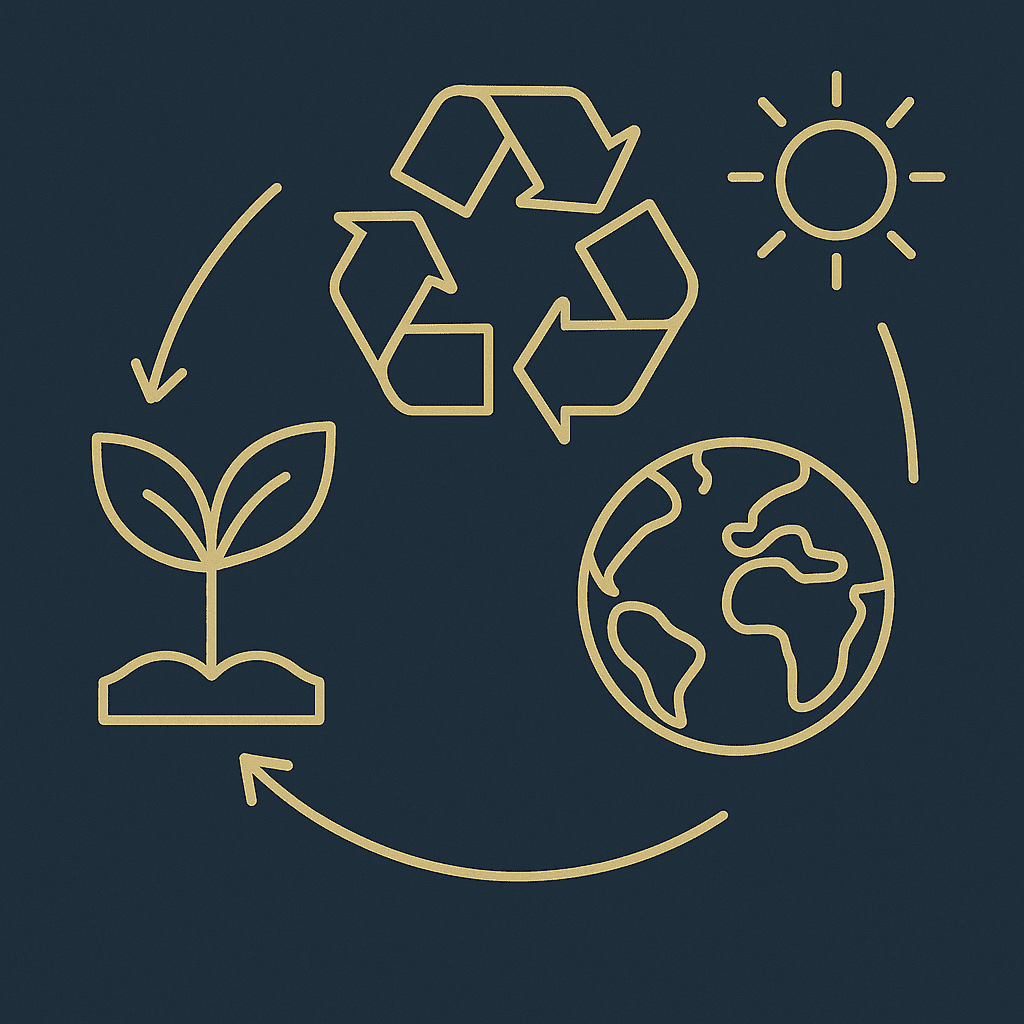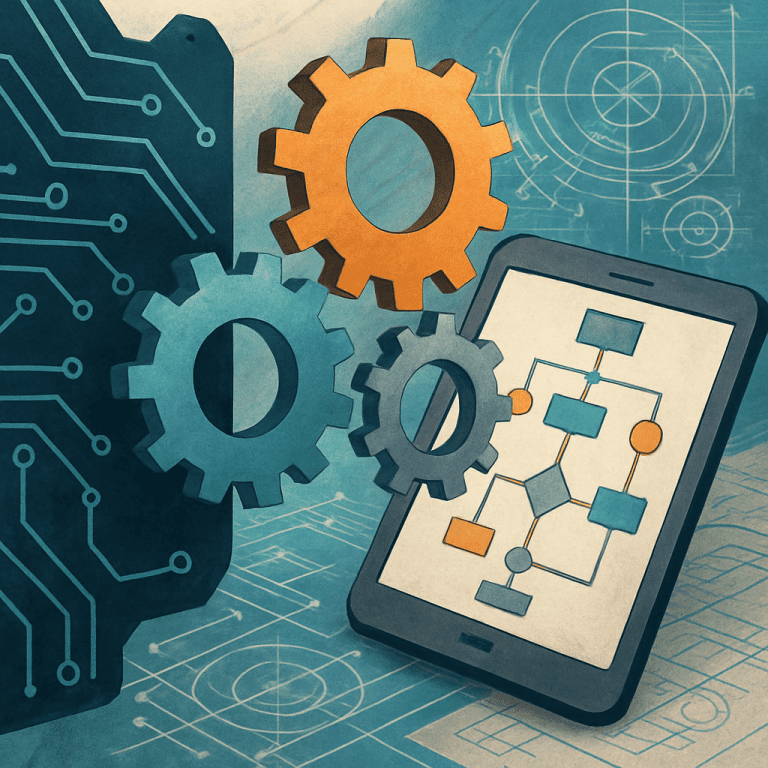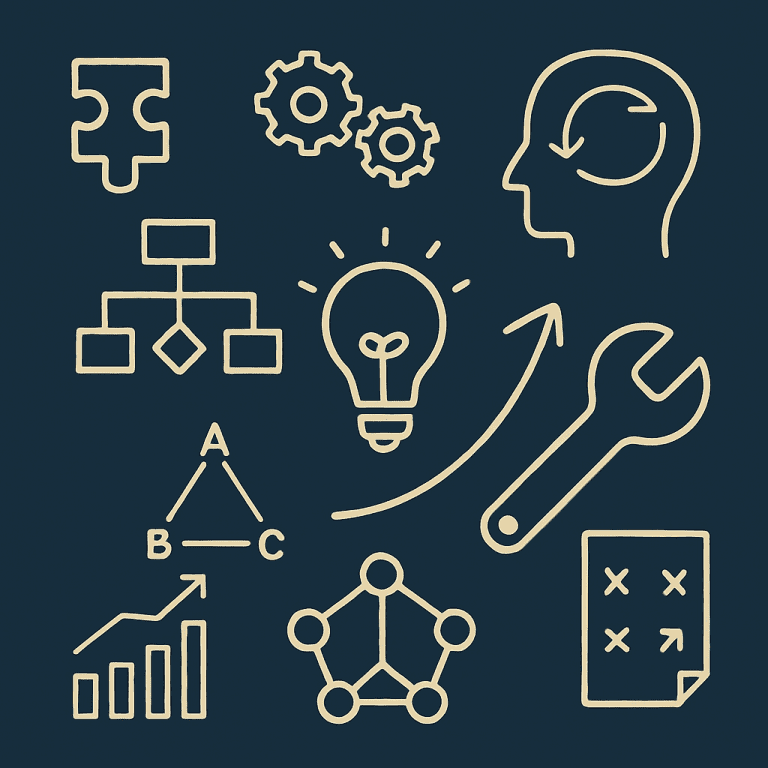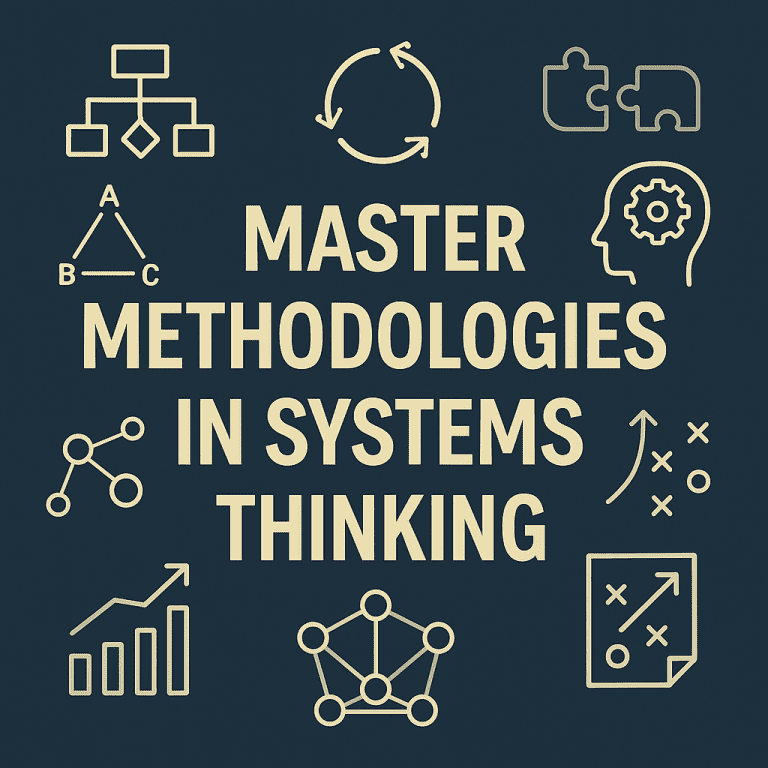Thinking Holistically About the Planet for Lasting Impact
In this defining age of climate disruption, water scarcity, food insecurity, and ecological collapse, sustainability can no longer be treated as a side initiative or a siloed department. It’s not a luxury — it is an existential imperative.
And more than a goal, it must become a way of seeing.
Environmental crises are not isolated failures. They emerge from deeper systemic patterns: short-term optimization, fragmented decision-making, linear consumption on a finite planet, and the dangerous illusion that human activity operates separately from ecological boundaries.
These patterns are self-reinforcing.
That’s why only systems thinking offers a lens wide enough — and deep enough — to address the planetary challenges we face. It doesn’t offer simple fixes, but it does offer a wiser way to see, ask, and design: surfacing the hidden feedback loops driving collapse and reshaping them toward regeneration.
This post explores how systems thinking strengthens sustainability efforts across five essential domains of planetary stewardship:
🌍 1. Climate
From emissions targets to planetary feedback alignment
Climate change is not just about measuring CO₂ or pledging net-zero by 2050. It’s about understanding Earth as a vast, interconnected system — with tipping points, nonlinear effects, and time delays that conventional policy often misses.
Systemic Insight:
- Delayed impact: Today’s emissions affect temperature decades from now — making urgency a moral necessity, not just a technical one.
- Reinforcing feedback: Warming triggers permafrost thaw → methane release → more warming → further thaw — a vicious loop.
- Tipping points: Certain thresholds, once crossed, may trigger irreversible changes (e.g., ice sheet collapse, rainforest dieback).
Action Points:
☑ Visualize climate drivers using systems maps — land use, trade, energy, and social norms.
☑ Model how behaviors and perceptions (not just technology) influence emission pathways.
☑ Design multi-benefit strategies that align climate action with health, equity, and resilience.
🔄 2. Energy–Food–Water Nexus
From siloed systems to interdependent resilience
Energy, food, and water are not separate challenges. They are deeply interdependent — forming a critical survival nexus. Yet governments, industries, and plans often manage them in isolation.
Systemic Insight:
- Water powers food and energy.
- Energy enables food production and water movement.
- Agriculture consumes both water and energy.
- Climate shocks ripple across all three.
Example:
Growing biofuels to reduce fossil reliance may strain water supplies and drive up food prices — a classic systemic backfire.
Action Points:
☑ Map interdependencies between energy, agriculture, and water in your region or sector.
☑ Optimize for systemic resilience, not siloed efficiency.
☑ Coordinate infrastructure investments with ecological limits and equity in mind.
🌿 3. Ecosystem Management
From extraction to regeneration
Forests, wetlands, oceans, and soils aren’t just resources. They are living systems that regulate climate, purify water, support biodiversity, and absorb shocks.
Systemic Insight:
- Ecosystems are adaptive networks, not static assets.
- Disrupting one part triggers cascading effects elsewhere.
- Biodiversity is a resilience multiplier, not a luxury.
Example:
Removing apex predators like wolves leads to herbivore overpopulation → overgrazing → soil degradation → water cycle disruption — a full-system collapse.
Action Points:
☑ Use feedback mapping to identify keystone species and high-leverage interventions.
☑ Manage ecosystems at the scale of landscapes or bioregions.
☑ Align land use and policy with natural regenerative cycles.
♻️ 4. Circular Economy
From take–make–waste to design–reuse–regenerate
Our industrial systems are fundamentally linear. But nature wastes nothing. A circular economy mimics nature — designing products and processes to sustain material loops.
Systemic Insight:
- Waste is a design failure.
- Planned obsolescence drives extraction and pollution.
- Circularity requires rethinking incentives, ownership, and design itself.
Example:
Consumer electronics with sealed batteries and proprietary parts lock in waste. A circular model enables repair, modular upgrades, and shared use.
Action Points:
☑ Map material flows in your city, industry, or organization.
☑ Identify and redesign wasteful loops.
☑ Encourage systems that reward durability, reuse, and shared access.
💚 5. Equity & Just Transitions
From unintended harm to inclusive, systemic change
Sustainability is not truly sustainable if it’s not just. Many green transitions — if designed without a systemic lens — displace communities, reinforce inequality, or create new harm.
Systemic Insight:
- Power dynamics shape environmental outcomes.
- Some communities bear the burdens while others reap the benefits.
- A system is only sustainable if all parts can thrive.
Example:
A carbon tax may reduce emissions but disproportionately burden low-income families — unless paired with systemic support.
Action Points:
☑ Use boundary critique (see Post 8) to surface who’s included/excluded.
☑ Involve marginalized voices in co-design.
☑ Ensure fair distribution of sustainability’s costs and benefits.
🛠 Mini-Practice: Design a Mini-System for Sustainability
Pick one area of your daily life or workplace — your commute, coffee routine, waste bins, or cooling system.
Now reframe it systemically:
- Where does waste or emissions occur?
- What invisible loops (habits, defaults, incentives) reinforce that behavior?
- What’s one small feedback shift you could introduce — a reuse pattern, a redesign, a shared service?
Sketch a causal loop diagram or a simple feedback map. Then test a micro-experiment.
Because lasting change begins not with global treaties — but with the loops we can see and shift in our immediate world.
🧠 Final Thought
Sustainability isn’t just about saving the planet. It’s about redesigning the systems we depend on — socially, economically, ecologically — to thrive over time.
Systems thinking helps us see the web, not just the strands.
It teaches us to ask deeper questions, design wiser interventions, and shift from short-term success to long-term stewardship.
Because whether you’re a policymaker, a designer, a consultant, or a citizen, the systems you touch — and how you touch them — shape the future of life on Earth.
Let’s choose to reinforce loops that sustain, not deplete.
Let’s design systems worthy of the future.
- The Whisper of the Whole: A Systems Thinking Guide for Consultants
- What is a System, Really?
- The Living Dance of Systems
- Resilience and the Wisdom of Adaptive Systems
- Roots of Insight
- The Systems Thinker’s Compass
- Drawing Complexity
- Peering Below the Surface
- Master Methodologies in Systems Thinking
- Enhancing Familiar Tools with Systems Thinking
- Transforming Business Through Systems Thinking
- Systems Thinking in Public Policy & Governance
- Sustainable Systems
- Systems Thinking for Engineering & Technology
- The Inner System: You
- The Roadblocks
- The Future of Systems Thinking
- Systems Thinking FAQ: Myths, Misunderstandings & Core Insights







